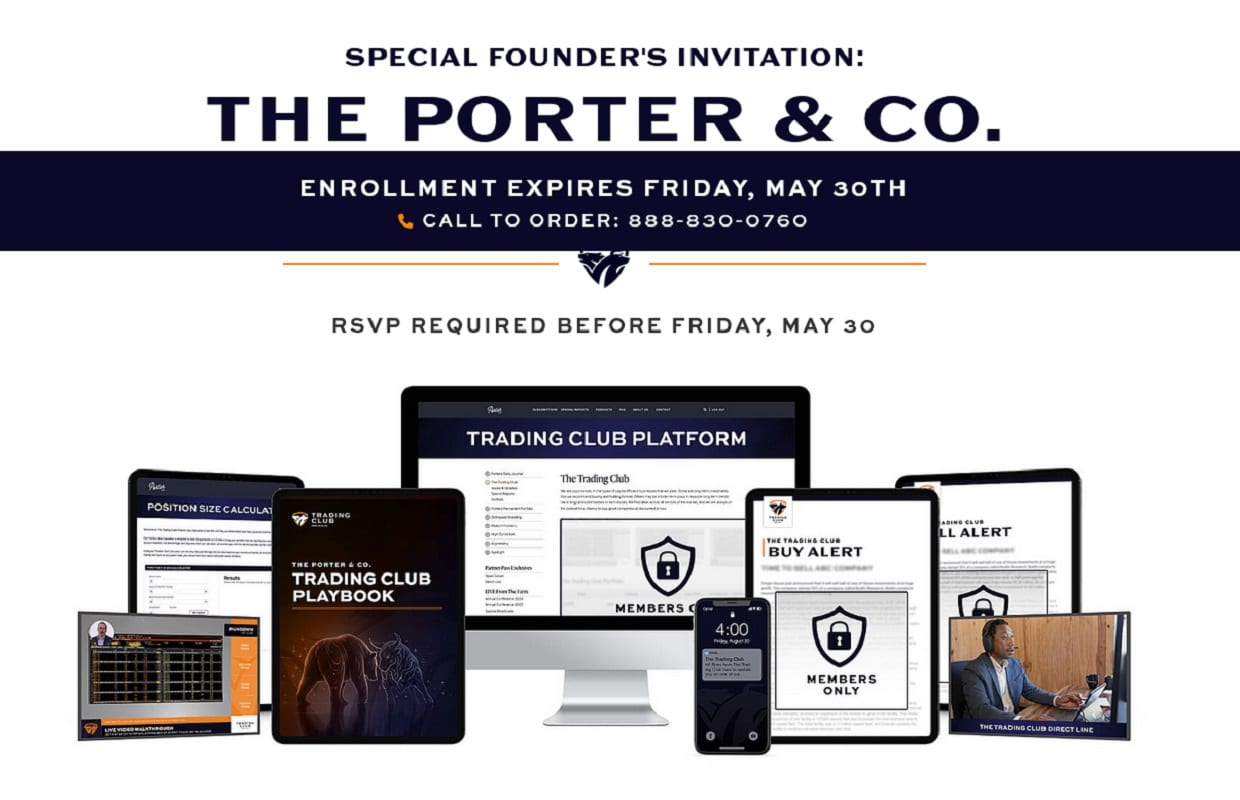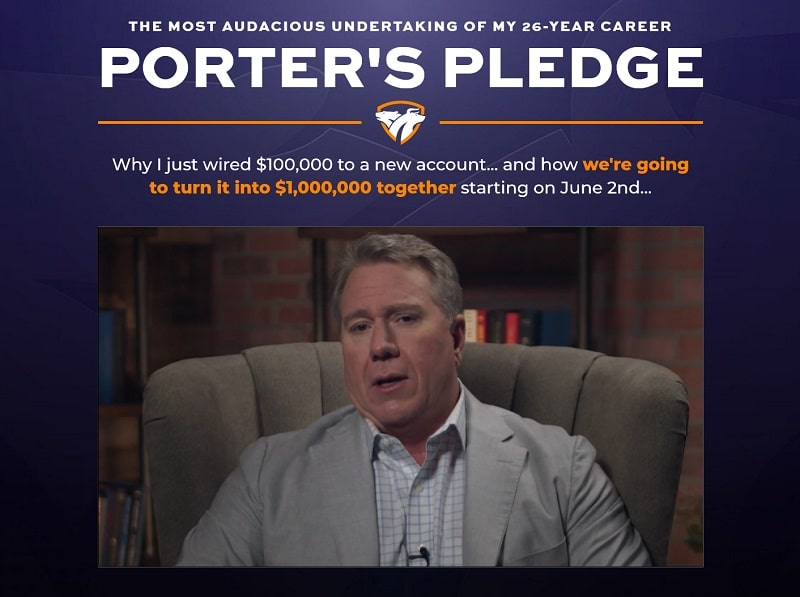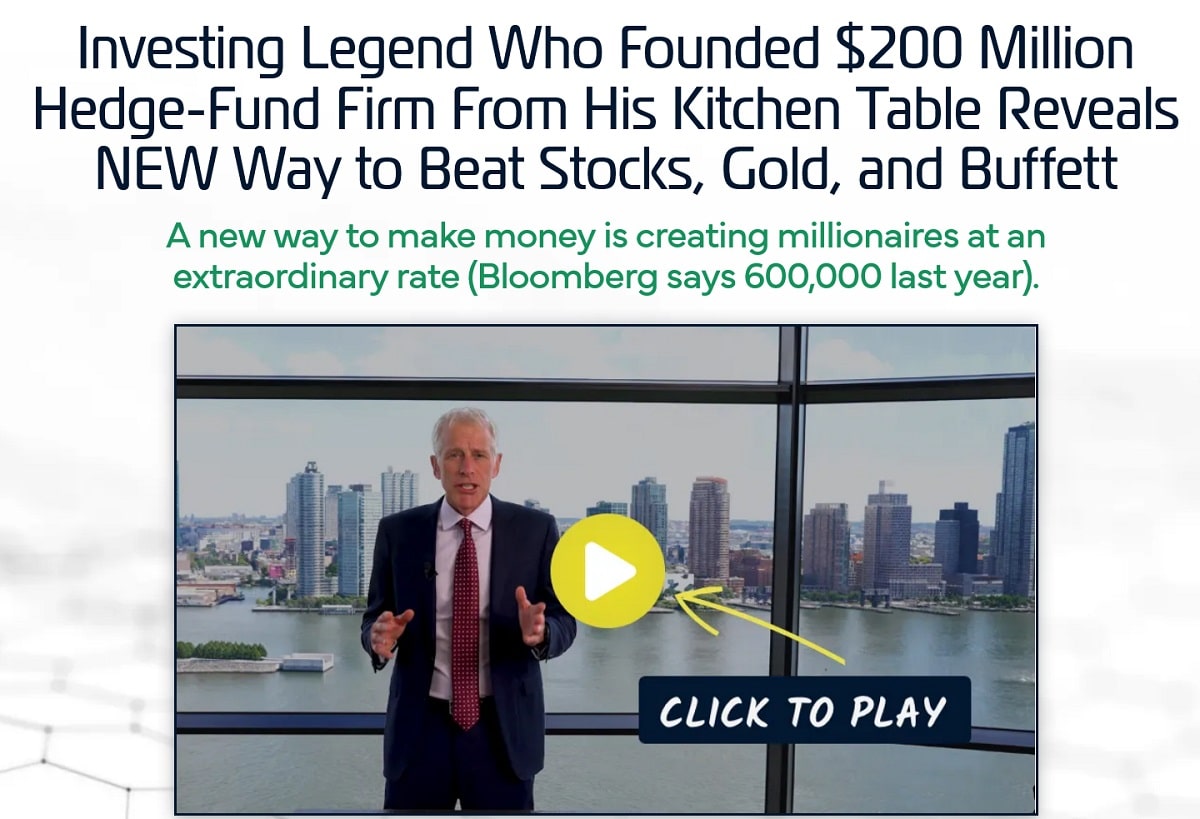Is Porter & Co.’s Trading Club legit? Explore its options trading strategy, 85% returns, and risks in our in-depth review of Porter Stansberry’s Million-Dollar Pledge. The Trading Club Review: Porter & Co. Options Trading Legit?
A Wild Ride or a Golden Opportunity?
Imagine a financial guru, Porter Stansberry, striding into the spotlight with $100,000 of his own money, pledging to transform it into a million bucks. No backroom whispers here—he’s broadcasting this challenge to the world, inviting regular investors to join him through the Porter & Co. Trading Club.
With markets in 2025 behaving like a rollercoaster on steroids, Stansberry claims his options trading strategy can deliver eye-popping returns—85% in just six months—without the stomach-churning risks that scare off most folks.
Sounds like a dream come true, doesn’t it? Or maybe a pitch too slick to trust. Let’s dive into the Trading Club, dissect its bold promises, and decide if it’s a genuine wealth-building machine or just another Wall Street mirage.
Meet Porter Stansberry: The Maverick Behind the Mission
Porter Stansberry is no rookie in the financial game. He’s the founder of Porter & Co., a Maryland-based research firm with a solid track record of guiding investors through market chaos.
Stansberry’s made a name for himself with bold calls, like scoring 600% on a Brazilian telecom stock in 1997, cashing in 500% shorting Japanese bonds in 1998, and nailing the 2008 Fannie Mae and Freddie Mac collapse. He even claims to have called the COVID-19 market bottom almost to the day.
These wins paint a picture of a guy who thrives in turbulent times, but let’s keep it real: past home runs don’t guarantee future grand slams.
What sets Stansberry apart is his willingness to put skin in the game—$100,000 of his own cash in a public account for the Million-Dollar Pledge. Is this the mark of a genius or just a flashy showman? That’s what we’re here to figure out.
What’s the Deal with the Trading Club?
The Porter & Co. Trading Club is Stansberry’s latest venture, designed to cash in on the wild market swings of 2025, which he ties to President Trump’s economic policies.
Picture it as a guided expedition through the jungle of options trading, with Stansberry as your seasoned guide, machete in hand.
Every 90 days, the Club rolls out a fresh set of trades—mostly options, but with room for exotic plays like merger arbitrage or distressed debt.
The heart of the operation is Stansberry’s pledge to grow $100,000 into $1 million, all in real-time, with every move shared so members can ride along if they choose.
Here’s the package for members:
- Step-by-step videos and analyses that spell out each trade’s logic, risks, and rewards.
- A Trading Club platform packed with research, tools, and a portfolio tracker to keep you in the loop.
- A “Playbook” that lays out the strategies in detail, updated as new tactics emerge.
- Regular alerts and reports to track trade performance and market shifts.
- A limited-time deal: join by May 30, 2025, for $2,000 a year (four trade batches) instead of the usual $5,000—a 60% discount locked in for life if you stick around.
- A 30-day money-back guarantee, though you’ll forfeit 10% to a cancellation fee.
The setup is built for folks who don’t want to be chained to a trading screen. Trades happen quarterly, require modest capital, and come with a calculator to tailor positions to your risk tolerance.
Stansberry’s promise to wait 24 hours before executing his own trades gives members first dibs, a rare move that screams transparency in a world full of shady advisories.
The Secret Sauce: The Holy Grail of Investing
The Trading Club’s strategy is what Stansberry calls the “Holy Grail,” a nod to hedge fund legend Ray Dalio’s playbook. The core idea is to build a portfolio where your bets don’t all rise or fall together—some zig, others zag, keeping your money steady when markets go berserk.
Here’s how it works in the options game: Stansberry picks rock-solid companies like Hershey’s or Philip Morris and sells put options on them. If the stock holds above the strike price, you pocket the premium. If it drops, you buy a great company at a price you’re happy with. To hedge against market crashes, he buys cheap put options on overhyped stocks like Apple or Starbucks, acting as an insurance policy that pays off if things go south. The trick? He targets options where the market’s fear (implied volatility) outpaces actual stock swings, snagging juicy premiums or bargain hedges.
Stansberry swears by three ironclad rules to keep risks low. First, only sell puts on companies you’d happily own forever, at a strike price you’d jump at. Second, choose trades with a massive safety buffer—think big premiums or low strike prices that cushion any fall. Third, hunt for options with inflated volatility, where the market’s panic hands you an edge. These principles aim to make losses rare and manageable, turning options trading into a game where the worst case is owning a stellar stock at a steal.
Show Me the Money
The Trading Club’s numbers are enough to make your jaw drop: an 85% return in six months, with trades like 74% on the iShares Silver ETF, 629% on Apple, and a staggering 1,338% on Starbucks.
A beta tester—Ross Hendricks’ mom, a retiree new to trading—reportedly tripled her income, raking in $4,600 in premiums, $2,600 in dividends, and $32,000 in capital gains on Philip Morris, plus a 19% return on VICI, a real estate trust.
Another trade on Novo Nordisk delivered 34% in just 25 days, a 229% annualized pop. These figures come straight from Porter & Co.’s accounts, not some hypothetical backtest, but there’s a catch: they’re not independently verified, and past wins don’t mean you’ll strike gold tomorrow.
Is This Thing Legit?
Why It Looks Like a Winner
The Trading Club has some serious street cred. Its negative correlation strategy—mixing income from put sales with crash protection from put buys—is a page torn from hedge fund playbooks, designed to keep your portfolio steady in choppy waters. By sticking to “forever stocks” like Hershey’s, it avoids the reckless bets on volatile names like Tesla that torch most options traders.
Stansberry’s public $100,000 account, with trades delayed 24 hours for members’ benefit, shows he’s not just peddling advice—he’s got real skin in the game. The setup’s beginner-friendly, with quarterly trades and clear tools, making it accessible even if options sound like rocket science. Plus, Stansberry’s history of calling market turns, from 1997’s emerging markets crash to 2020’s COVID bottom, suggests he’s got a nose for chaos.
The Fine Print
But hold your horses—this isn’t a slam dunk. Promising to turn $100,000 into $1 million, even over years, is a bold flex, and Stansberry admits it could flop.
Options trading, even with guardrails, can bite hard if you stray from the path. The strategy’s reliance on holding losing trades as part of the plan takes mental steel—most folks panic and jump ship, which could tank the whole approach.
Those 85% returns and Mrs. Hendricks’ story are tantalizing, but without third-party audits, you’re trusting Porter & Co.’s word. The $2,000 entry fee (or $5,000 post-discount) is steep, and you’ll need hefty returns to justify it, especially if your portfolio’s lean.
Finally, the hype around 2025’s volatility—tied to Trump’s policies and recession fears—might be overblown, and if markets calm down, the strategy’s edge could dull.
How It Measures Up
Unlike the sketchy options schemes flooding the internet, the Trading Club plays it smart, blending institutional-grade risk management with a retail-friendly approach. Most options advisories push rapid trades or gamble on meme stocks, often ending in disaster.
Stansberry’s focus on stable companies and quarterly trades feels like a marathon, not a sprint. That said, the lack of detailed stats—like how many trades won or lost—makes it tough to stack up against competitors. It’s less flashy than most, which is a good thing, but you’re still betting on Stansberry’s execution.
The Market Moment
Stansberry’s banking on 2025 being a wild ride, pointing to Trump’s trade policies and red flags like negative GDP, spiking bankruptcies, and surging jobless claims. He compares today’s VIX (Wall Street’s fear gauge) to crisis levels from 2008 (80) or 2020 (82), which juice options premiums and make trades like Novo Nordisk’s 34% in 25 days possible.
Back in 2009, he pulled a similar move with Tiffany’s, scoring $100 per contract with minimal risk—a bet that could’ve yielded 526% if held to acquisition. But let’s not get carried away: predicting endless volatility or a recession is a crapshoot. Markets can surprise even the sharpest minds, and banking on chaos is a gamble in itself.
Who’s This For?
The Trading Club could be a fit for:
- Seasoned Investors: If you know options and can stick to the script, this might supercharge your returns.
- Retirees Seeking Income: Like Mrs. Hendricks, cautious types looking for extra cash without crazy risks could love this.
- Disciplined Souls: You need the nerve to hold losing trades and resist chasing quick bucks.
It’s probably not for:
- Total Newbies: Options are tricky, and learning takes work, even with hand-holding.
- Adrenaline Junkies: If you’re after moonshots, you’ll ignore the rules and crash hard.
- Tight Budgets: $2,000 is a big ask if your portfolio’s small or you’re wary of subscriptions.
So, Is It Legit?
Let’s break it down:
- Transparency Shines: Stansberry’s public account and delayed trades scream accountability—rare in this space.
- Risks Are Upfront: Warnings about options’ dangers and the need for discipline check regulatory boxes.
- Numbers Need Scrutiny: The 85% return is a head-turner, but without audits, it’s Porter & Co.’s word.
- Not a Scam: The strategy’s solid, the firm’s established, and the beta tester’s story adds a human touch, though it’s just one case.
- Subscriber Hype: A 97% survey vote for options guidance shows buzz, but not proof it works.
The Trading Club looks like the real deal—a thoughtful system from an experienced player. But it’s not a magic bullet. Your success hinges on sticking to the rules, and the cost and risks demand a hard look.
What Could Go Wrong?
- Market Whiplash: Volatility’s a double-edged sword—great for premiums, brutal if you misstep.
- Screw-Ups: Ignore the rules, chase risky stocks, or skip hedges, and you’re in for a world of hurt.
- Cost vs. Payoff: $2,000 needs to deliver big to be worth it, especially for smaller accounts.
- Mental Hurdles: Holding losing trades is tougher than it sounds—fear can derail even the best plans.
- Economic Guesswork: If the predicted chaos fizzles, the strategy might lose its spark.
Do your due diligence. Dig into Porter & Co.’s background, talk to a financial advisor, and know your risk tolerance before jumping in.
The Bottom Line
The Porter & Co. Trading Club is a gutsy bet on turning 2025’s market madness into wealth, blending a hedge fund-inspired strategy with a setup anyone can follow. Stansberry’s transparency and focus on blue-chip stocks set it apart, and that 85% return in six months—if legit—is hard to ignore.
But options trading’s no picnic, and $2,000 is real money. For disciplined investors with cash to play, this could be a smart way to surf the market’s waves. For others, the risks and price tag might be too much. If you’re tempted, move fast—the $2,000 deal expires May 30, 2025—but don’t dive in without sizing up the risks.
Take the Next Step
Intrigued? Hit up Porter & Co.’s website or call 888-830-0760 for the full breakdown. Get a grip on the strategy, costs, and risks before you commit, and maybe bounce it off a financial advisor to see if it fits your game plan.
FAQ: Porter & Co.’s Trading Club
What is The Trading Club
The Trading Club is a real-money trading initiative led by Porter Stansberry and his lead analyst, Ross Hendricks.
Every 90 days, Porter and Ross will issue a new tranche of carefully selected opportunistic trades.
You’ll see every trade made inside a real-money $100,000 account Porter and Ross are managing publicly — with the goal of turning it into $1,000,000 over time.
Why did Porter & Co. launch The Trading Club?
They created The Trading Club because they believe we’re entering a narrow window of wealth-building opportunity. Volatility has opened the door to a strategy that has already returned 85% in less than 6 months, and they’re putting real money on the line to prove it.
As Porter says, this is “the most audacious undertaking of my 26-year career”, and he’s inviting you to join him in the trenches.
How does The Trading Club work?
Every 90 days, you’ll receive a new batch of trades — typically involving options on world-class companies. These are the same trades Porter is making with his own money in a real brokerage account.
Each trade comes with a step-by-step video, a position-sizing calculator, and ongoing updates, so you can follow along at your own risk and pace.
Does The Trading Club use options?
Yes, but not in the risky, overly speculative way you may have seen elsewhere. Porter calls this approach one of the biggest breakthroughs of his career — using options conservatively to generate cash income, hedge against volatility, and buy great businesses at deep discounts.
As he puts it: “We’re not trying to predict markets… just stacking the odds in our favor.”
Do I need to open a new brokerage account?
Most likely not. You can use your existing brokerage account as long as it allows basic options trading. Porter and Ross are using a standard brokerage account. Nothing fancy or exclusive.
How much money do I need to follow along?
While Porter opened his account with $100,000, you do not need this much. Most trades only require a few thousand dollars each, and everything can be position-sized to your comfort level using their calculator.
How do I follow along if I have a different amount of money?
You’ll receive a position-sizing calculator that helps you tailor each trade to your portfolio size. Whether you’re working with $10,000, $100,000, or $1,000,000, just use this calculator.
Can I do this if I’ve never traded options before?
Yes. In fact, one of the beta-testers is Ross Hendricks’ 76-year-old mom, who had never traded options before, yet she was able to easily get started and make these trades. However, trading options involves risk and isn’t suitable for all investors. You can lose some or all of your investment capital. Before trading options, consider your financial situation and understand the strategies and risks involved. As always, you should consider consulting with a registered investment advisor.
How much time will this take?
Very little. You’ll typically place a small handful of trades every 90 days. This is not day trading. You don’t need to watch the markets daily. That said, you should spend time reading our research and analysis before placing the trades, and consider your financial situation and understand the strategies and risks involved.
How is The Trading Club performing?
This is a new product with no official track record, but one of Porter’s accounts using this methods has returned 85% in under 6 months — during a period when the Nasdaq was down as much as 20%.
As you saw today, Porter has also earned over $100,000 in options premiums in another account, and on one of her trades, Ross’s mom outperformed the S&P by 68% using the same methods.
The market is volatile. Is this really a good time to trade?
Yes, we think so. In fact, that’s the whole point. This strategy was built for volatility.
As Porter says, “we thrive in periods of mass uncertainty.” The more the market swings, the greater the opportunity to profit using the methods you’ll learn inside.
However, trading options involves risk and isn’t suitable for all investors. You can lose some or all of your investment capital. Before trading options, consider your financial situation and understand the strategies and risks involved. Also, you should consider consulting with a registered investment advisor.
What happens if I can’t make the trades exactly when you do?
You’ll actually have at least a 24-hour window before any trade is placed in Porter’s real-money account. That means you’ll always have the chance to review the trade, understand the logic, and place it on your own before Porter and Ross execute it themselves.
How do I join The Trading Club?
Visit official Porter & Co. website or or call 888-830-0760 to secure your Founding Member spot. It’s $2,000 for an entire year’s worth of trades — a 60% discount off the normal $5,000 price. Once you join, you get immediate access to all training, tools, and the first trades launching on May 29.

































